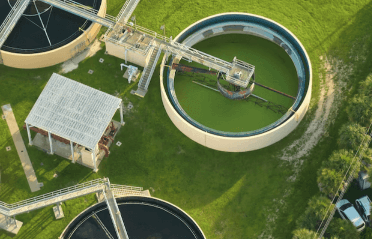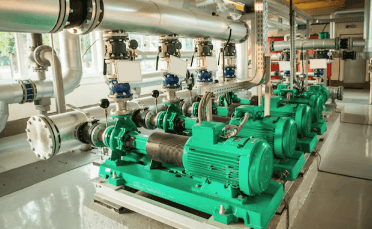Question
a.
continuous packed bed reactor
b.
stirred tank reactor with biomass recycles
c.
continuous fluidized bed bioreactor
d.
all of these
Posted under Biochemical Engineering
Interact with the Community - Share Your Thoughts
Uncertain About the Answer? Seek Clarification Here.
Understand the Explanation? Include it Here.
Q. Mixing profiles closest to plug flow are observed in
Similar Questions
Explore Relevant Multiple Choice Questions (MCQs)
Q. On a glucose medium, the growth of an organism is characterized by the following Monod model and stoichiometric parameters μm = 0.3 h¹, Ks =0.05 g.l¹ and Yxs = 0.3 g.g¹ When this organism is grown in a 2 litre continuous on a medium containing 10 g.l¹ of glucose added at 1 l.h¹, the steady state concentration of biomass in the reactor will be
View solution
Q. A continuous reactor has a dilution rate of 0.5 h¹. Its residence time would be
View solution
Q. Which of the following is used to calculate mass of substrate in the reactor?
View solution
Q. If biomass yields are constant, then the biomass productivity of a culture grown in continuous reactor will
View solution
Q. Low dissolved oxygen concentrations leads to
View solution
Q. In a continuous reactor, the medium contains 40 g.l¹ of maltose and the medium flow rate is 10 litres per hour and the effluent contains 20 g.l¹ of lactate. What is the productivity of lactate production from this reactor?
View solution
Q. Which of the statement is true for continuous reactor at steady state?
View solution
Q. A continuous bioreactor in which only the flow rate is used to control the rate of cell or product productivity is called
View solution
Q. For organisms growing in a chemostat, the specific growth rate
View solution
Q. Saccharomyces cerevisiae is being grown in a chemostat converts glucose to biomass, ethanol, glycerol and carbon dioxide. At steady state, the concentration of glucose, biomass, ethanol and glycerol will
View solution
Q. In aerobic yeast fermentation for production of citric acid from alkanes using a fed-batch culture, why alkanes are slowly fed to the yeast?
View solution
Q. A fed-batch reactor containing 1 g.l¹ of substrate in 2 litre of medium. It is fed with 1 g.l-l of substrate at the rate of 1 litre per hour. After 10 hours, the concentration of substrate in the reactor was 0.5 g.l¹ . The mass of substrate that was used by the culture in the reactor was
View solution
Q. Toxins accumulated in a reactor can lead to low biomass yields probably due to which of the following?
View solution
Q. The cellular productivity in a continuous stirred tank fermenter (CSTF) increases with an increase in the dilution rate and reaches a maximum value. If the dilution rate is increased beyond the maximum point, the productivity will
View solution
Q. Fluidized bed bioreactors provide higher mass transfer rates than packed bed bioreactors because
View solution
Q. In fed-batch fermentation, mass of substrate utilized is calculated using the relationship
View solution
Q. Mixing in an anaerobic sludge blanket reactor is due to
View solution
Q. In batch culture, protogon is produced from peptone during the stationary phase with a yield of 0.4 protogon mg per g of peptone. If it is to be produced in a chemostat at a dilution rate of 0.5 h¹ from a medium containing 10 g.l¹ of peptone, then the rate of protogon synthesis would be
View solution
Q. Formation of end product by Lactococcus lactis will become non-growth associated as lactic acid accumulates because
View solution
Q. Which of the following would not be subjected to the "glucose effect"?
View solution
Recommended Subjects
Are you eager to expand your knowledge beyond Biochemical Engineering? We've handpicked a range of related categories that you might find intriguing.
Click on the categories below to discover a wealth of MCQs and enrich your understanding of various subjects. Happy exploring!








